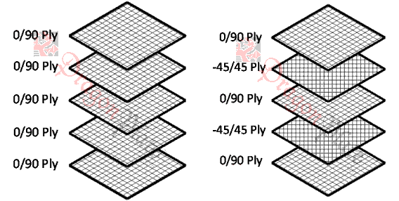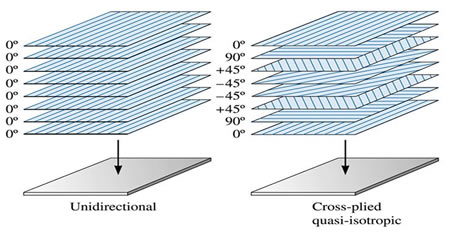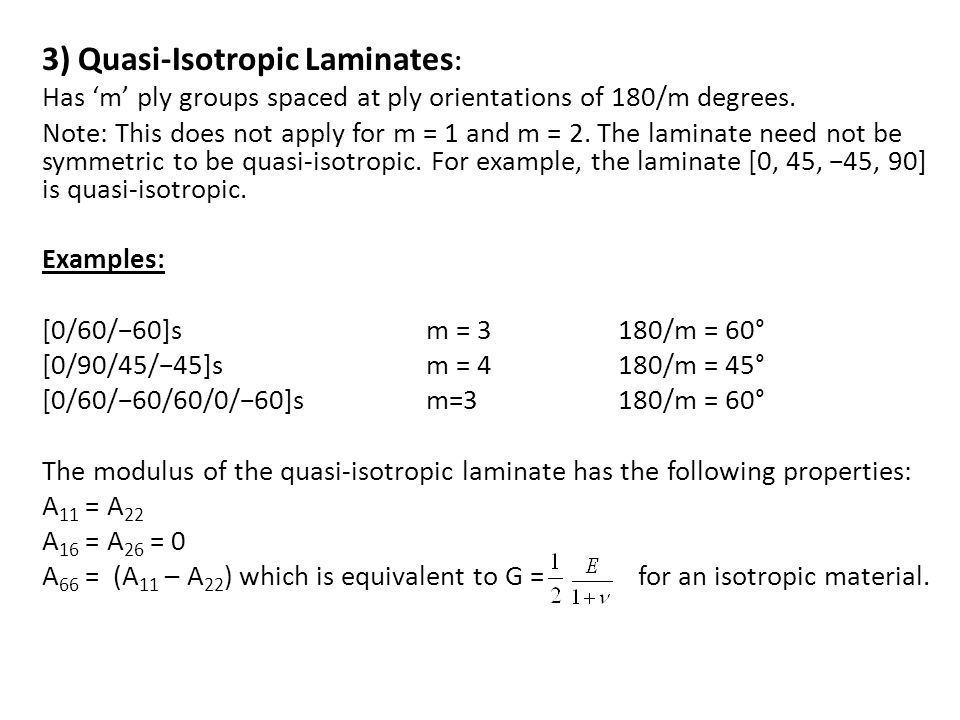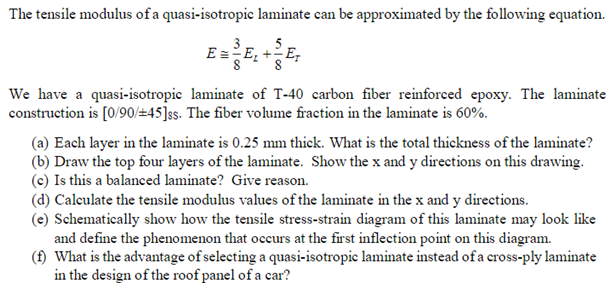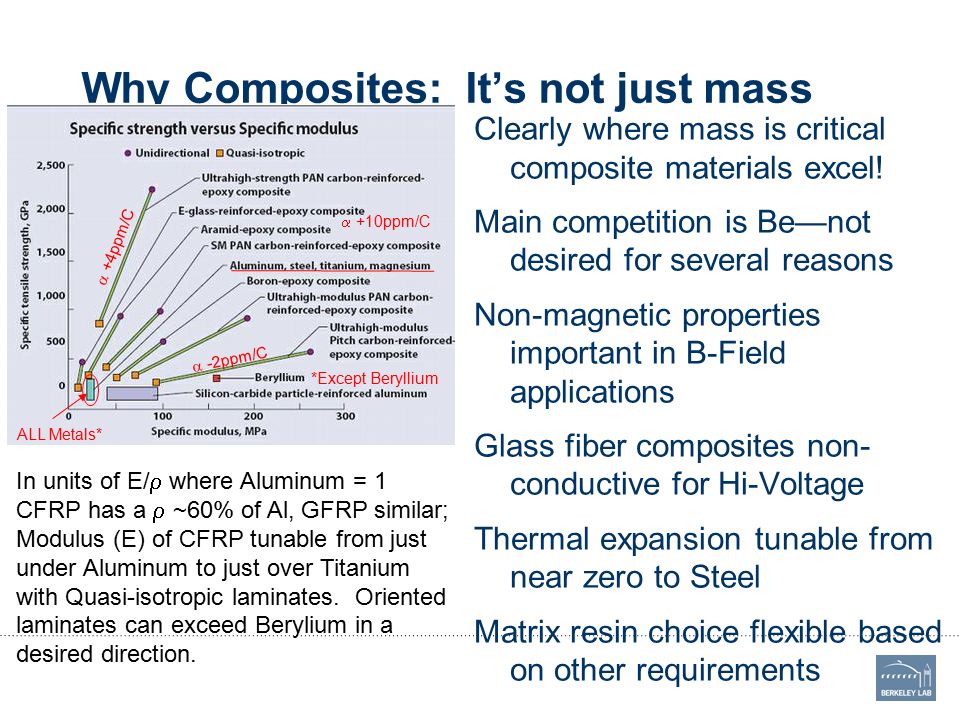Quasi Isotropic Laminate Definition
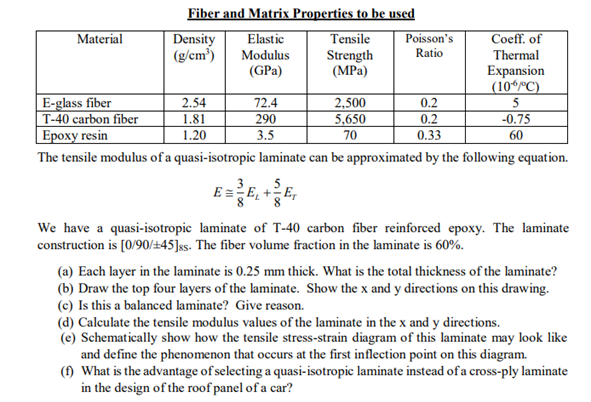
As mentioned previously the load ratio was 0 1 and the frequency of load cycles was 10 hz.
Quasi isotropic laminate definition. N2 the three dimensional thermoelastic properties of quasi isotropic laminates are derived in closed form equations in terms of the principal lamina properties. Quasi isotropic laminates exhibit isotropic that is independent of direction inplane response but are not restricted to isotropic out of plane bending response. The results presented here show the limits of the laminate theory and in fact there is a variation in the elastic modulus of the 0 45 45 90 s laminate. Unfortunately capitalizing on the benefits of anisotropy will probably occur in other industries first before being adopted by the more conservative aircraft industry.
Similar to the tooling shell the backing structure laminate is symmetric and quasi isotropic so that adding or reducing the thickness of the sheet is as easy as adding more plies or laying up less. Quasi isotropic laminates behave like isotropic materials at the laminate level though their individual plies are orthotropic or anisotropic with respect to the reference coordinates. The equations describe both the inplane and the out of plane properties applying the classical laminate theory and the averaging method proposed by goetschel and radford j adv. Depending upon the stacking sequence of the individual layers the laminate may exhibit coupling between inplane and out of plane response.
The strength properties however will vary with direction. Quasi isotropic laminates are made when the orientations of the plies are balanced so that the extensional stiffness of the laminate is the same in each in plane direction. Typically quasi isotropic sheets are created using carbon fiber weaves with plies oriented at 0º 90º 45º and 45º with at least 12 5 of the plies in each of these. In case of quasi isotropic laminates only the elastic in plane properties are isotropic.
Qiso is offered in a variety of standard widths including 36 52 and 59 inches and also in a range of standard areal weights including 272 g m 2. Thus now we can get an estimate of the isotropicness of the quasi. In practice laminate designs if not quasi isotropic are certainly still symmetric about the mid plane balanced equal quantity of θ and θ plies and orthotropic. Depending upon the stacking sequence of the individual layers the laminate may exhibit coupling between inplane and out of plane response.

/Quasi%20isotropic%20carbon%20fiber%20manufactured%20in%20cny.png)
